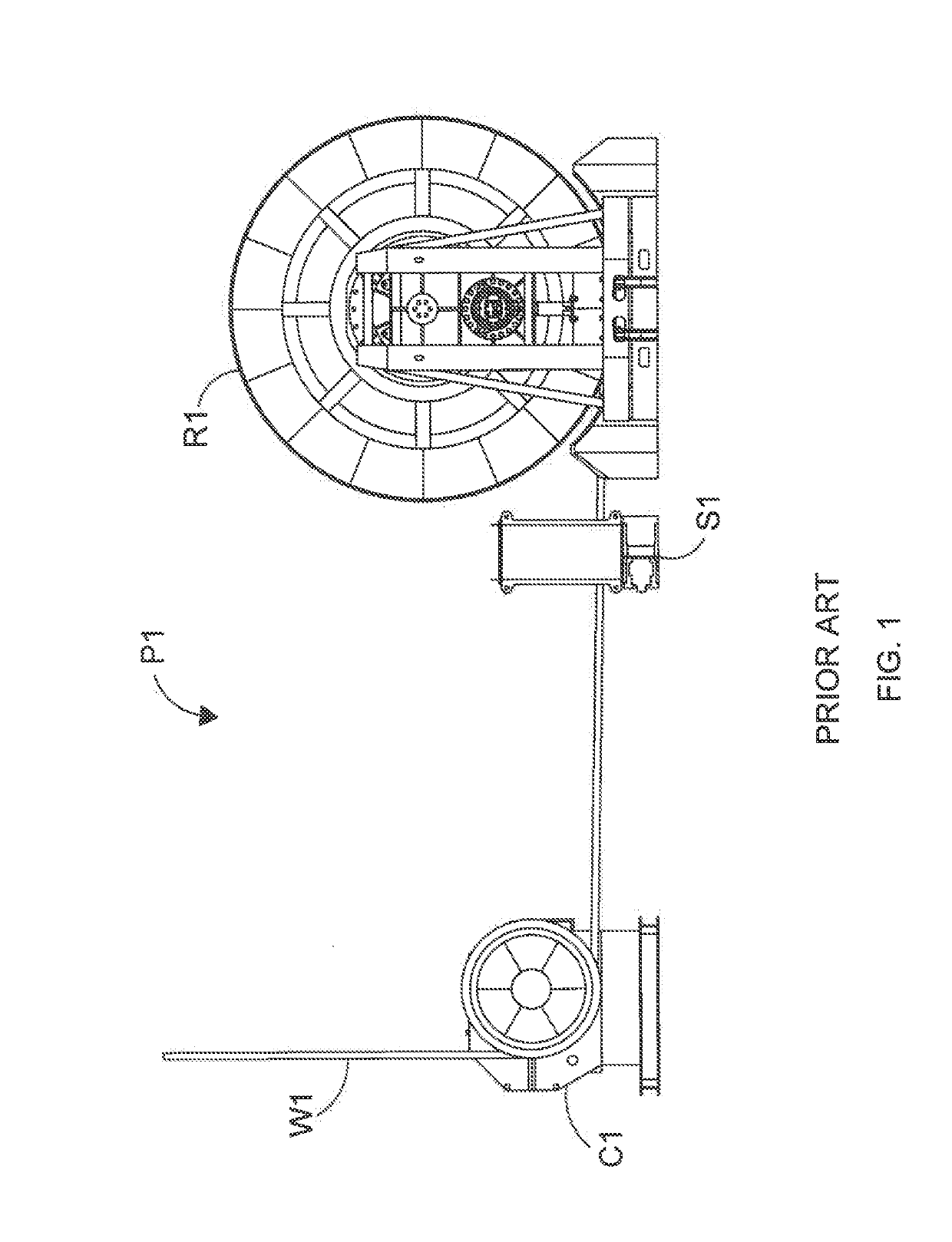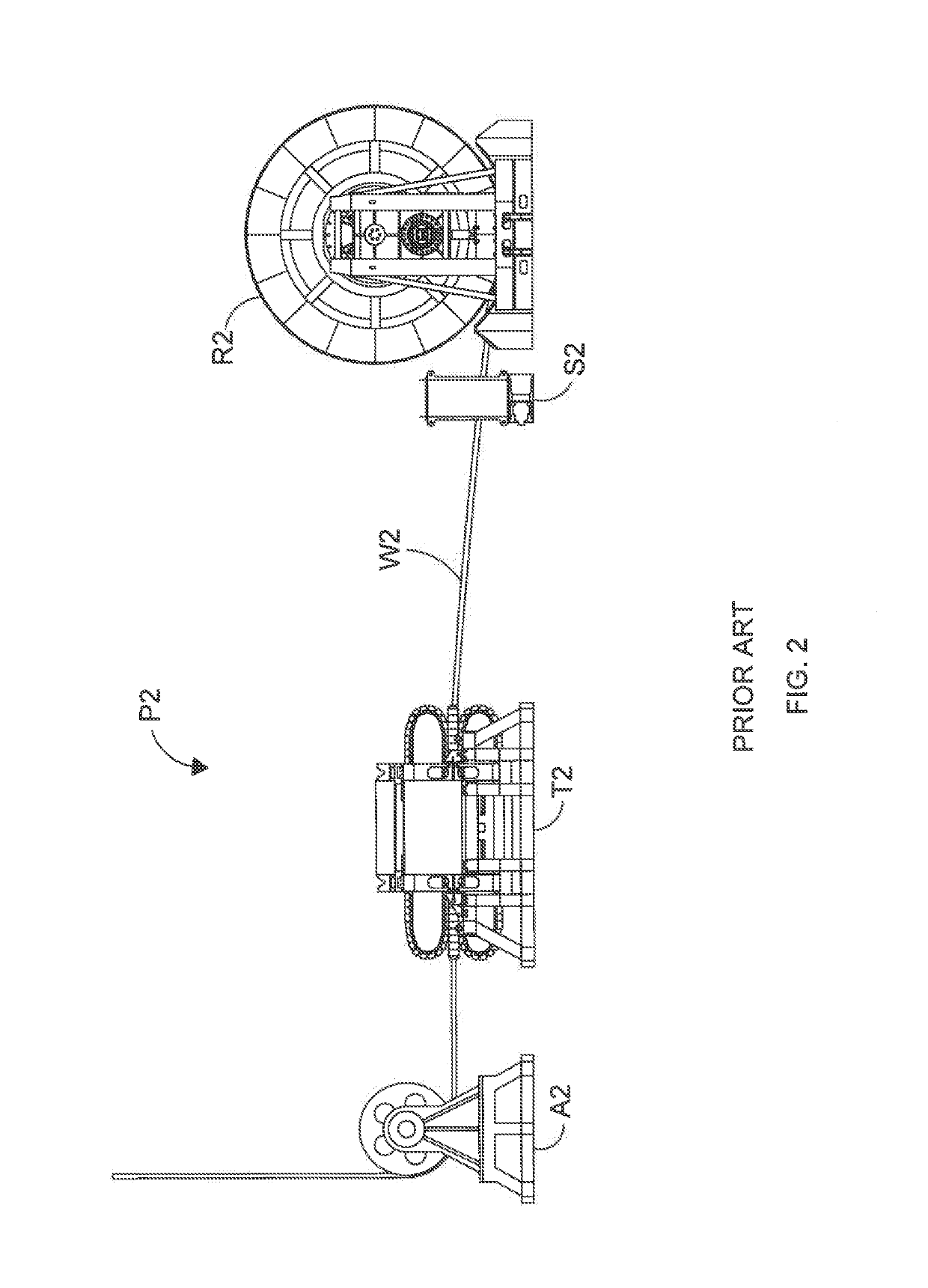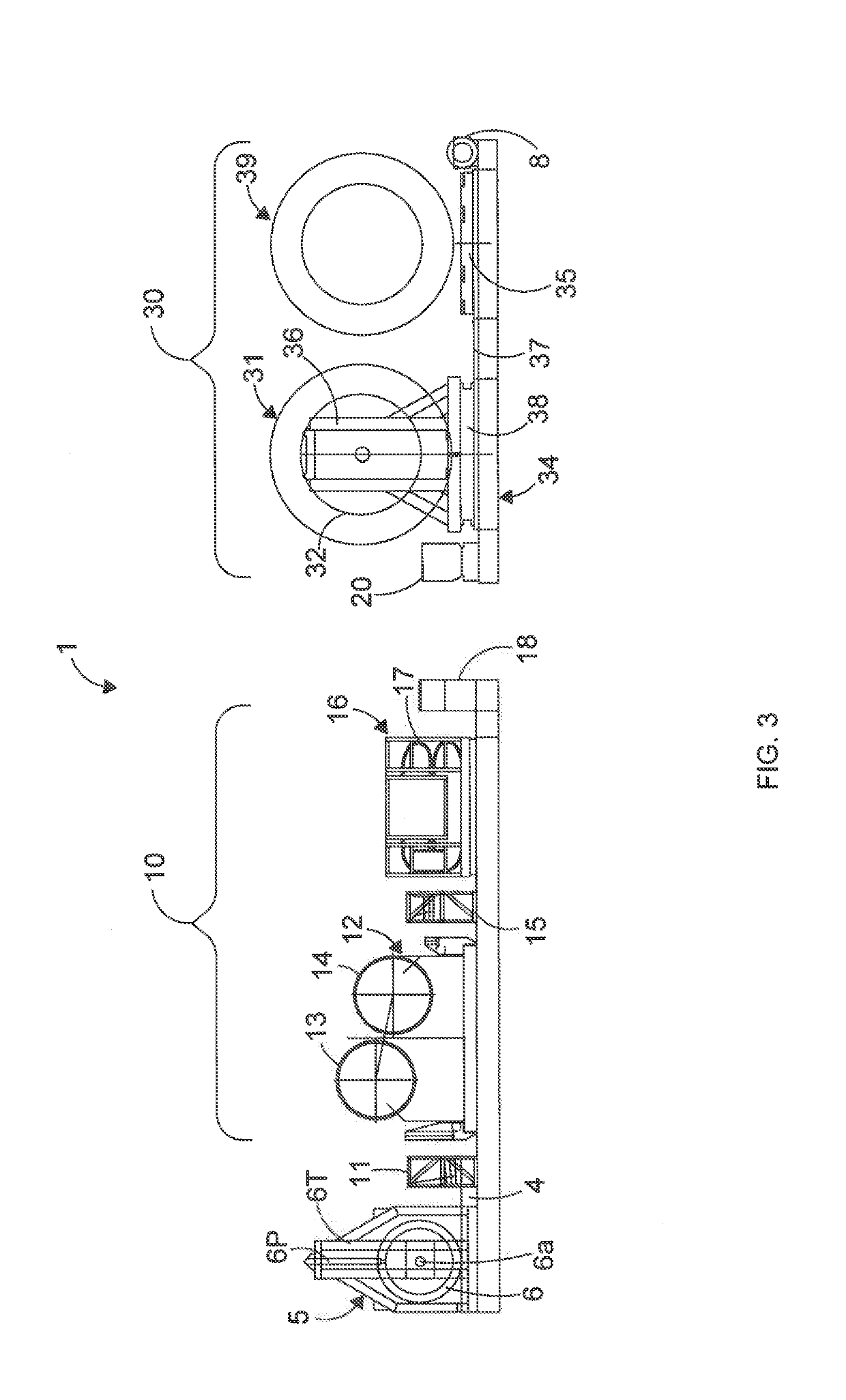Rope maintenance system
a maintenance system and rope technology, applied in the field of systems and methods, can solve the problems of increasing the cost of operators in downtime, completing the whole process, and affecting the operation, so as to achieve the effect of enhancing grip and facilitating identification of defects
- Summary
- Abstract
- Description
- Claims
- Application Information
AI Technical Summary
Benefits of technology
Problems solved by technology
Method used
Image
Examples
Embodiment Construction
[0088]Referring now to the drawings, FIG. 3 shows an example of a crane rope spooling system 1 for spooling crane ropes on to a crane drum (not shown). The system 1 as shown in FIG. 3 comprises, from left to right: a sheave assembly 5 including a heave compensation system 6hc; a grease injector 11; a tensioning system 10 comprising at least a primary back tensioner, in this example a twin-drum traction winch 12 and a secondary back tensioner, in this example a 2-track tensioner 16 and a Non-Destructive Testing (NDT) inspection unit 15 located between the traction winch 12 and the tensioner 16; a wire guide 18; a spooling unit 20 and a reel drive system 30 which comprises at least one reel 31 and more preferably at least one spare reel 39 such that the reel drive system 30 preferably comprises at least two reels 31, 39 and an initiation winch 8.
[0089]Optionally the ropes to be maintained are wire ropes, optionally steel wire ropes typically used on cranes (not shown), for example shi...
PUM
 Login to View More
Login to View More Abstract
Description
Claims
Application Information
 Login to View More
Login to View More - R&D
- Intellectual Property
- Life Sciences
- Materials
- Tech Scout
- Unparalleled Data Quality
- Higher Quality Content
- 60% Fewer Hallucinations
Browse by: Latest US Patents, China's latest patents, Technical Efficacy Thesaurus, Application Domain, Technology Topic, Popular Technical Reports.
© 2025 PatSnap. All rights reserved.Legal|Privacy policy|Modern Slavery Act Transparency Statement|Sitemap|About US| Contact US: help@patsnap.com



